Sabudana Khichdi Recipe (Fluffy & Non-sticky), A well-known Indian meal called sabudana khichdi is prepared with tapioca pearls, entire spices, roasted peanuts, potatoes, and fresh curry leaves. Have you ever questioned why sabudana khichdi becomes chewy, sticky, and sticks to your teeth? Your sabudana khichdi issues have a fantastic remedy, which I can provide. Use my step-by-step visual instructions to learn how to create the best non-sticky sabudana khichdi.
Those who like Vegan & Vegetarian recipes can join my Facebook group World Best Vegetarian & Vegan Recipes.
Those of you who have been reading our blog for some time already know that we make videos for each recipe on our YouTube channel.
At the end of this post is a recipe card and a disclosure of Amazon affiliate links.
Sharing is caring! LET’S BE FRIENDS ON PINTEREST! WE’RE ALWAYS PINNING TASTY RECIPES!
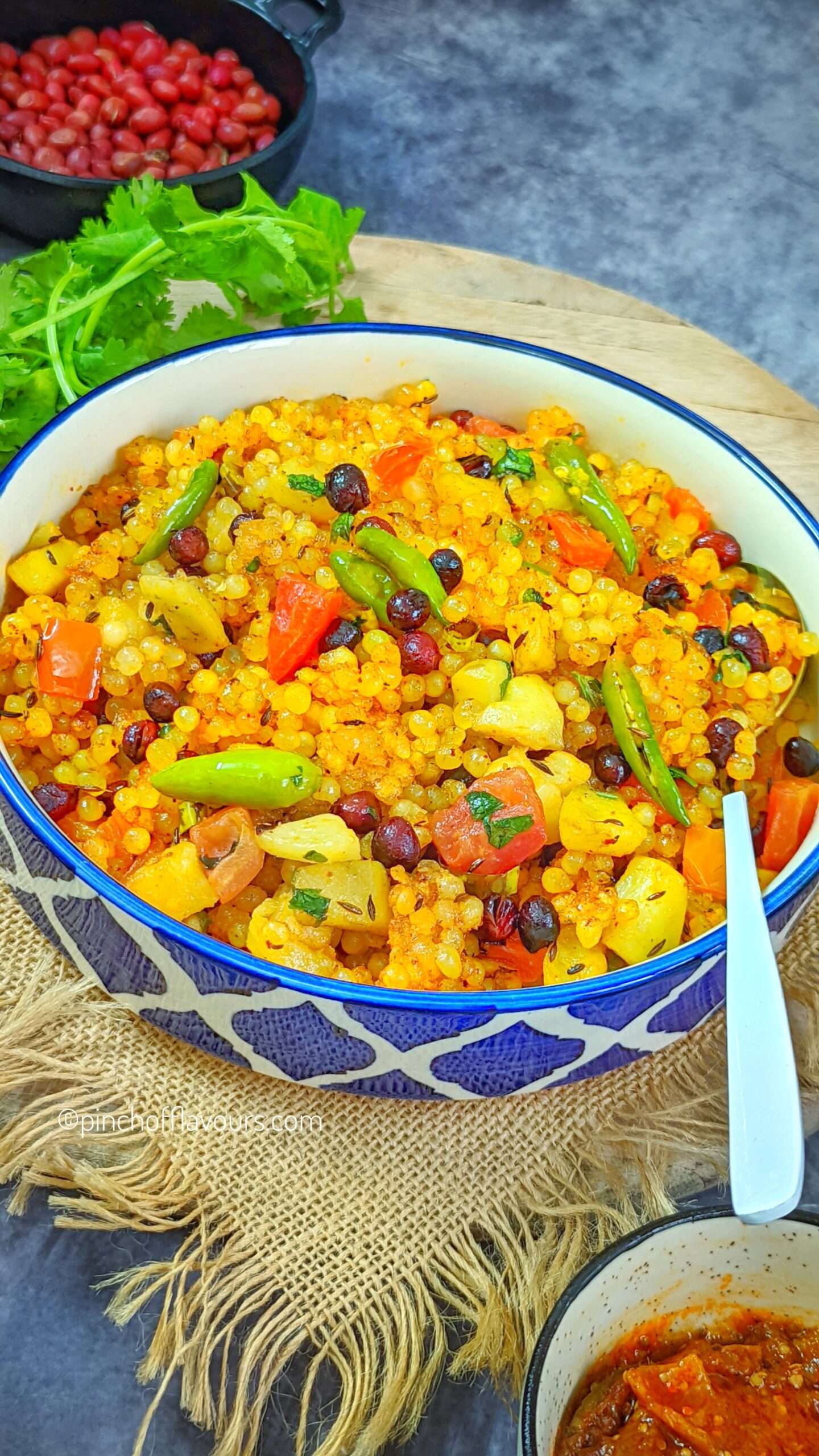
About Sabudana Khichdi Recipe
One of the most well-known fasting dishes is sabudana khichdi, which is cooked with sabudana pearls, boiled potatoes, roasted peanuts, and a few spices. Typically, it is prepared on Hindu fasting holidays like Ekadashi, Mahashivratri, and Navratri.
Sabudana Khichdi is a sago pearl-based pilaf or pulao. During the Navratri fasting season, India enjoys tremendous popularity for this vegan and gluten-free cuisine. But in my opinion, you don’t really need a special occasion to prepare and consume it.
In Asian countries, sabudana, often called sago, is a refined plant starch made from cassava root. Balls of this starch are fashioned to resemble pearls. Sabudana contains a lot of carbs, which means it might provide you with a quick energy boost.
The traditional Hindu culture regarded it as one of the best fasting foods due to its capacity for boosting energy quickly.
As a result, many Hindus prepare a variety of foods, including this khichdi, using sabudana during various festivals and fasts like sabudana vada.
Sabudana requires careful preparation and cooking due to its high starch content. Without it, the starches may clump together and have a chewy, gluey, and sticky quality.
Make the greatest sabudana khichdi using this recipe, which is non-sticky, fluffy, and soft with no chewiness in the pearls.
If you’ve never cooked with sabudana before, I highly suggest reading my Important suggestion to keep in mind to ensure the success of your recipe.
There is no hard and fast rule for soaking sabudana in water. There is no need for soaking overnight depending on the quality of sago pearls. After I tried a couple of times I got the perfect result by first washing or rinsing the sago pearls very nicely and then just soaking them in very little water and after 4 hours I got perfectly nice nonsticky, soft sago pearls ready to be used. Yes totally depends on sago pearl’s quality.
Ingredients
- 1 cup – Tapioca Pearl or sago
- 1/2 – Roasted Peanuts
- 5 tbsp – Sesame oil
- 1/2 tsp – Turmeric powder
- 2 to 3 medium – Boiled potatoes
- 1 tbsp – Cumin seeds
- 3 – Green chili chopped
- 1/2 cup – Coriander chopped
- 2 medium – Tomato chopped
- 1 tbsp – Lemon Juice
- 1 tbsp – Sendha Namak
- 1 tsp – Sugar
- 1 tbsp – Roasted cumin powder
- 1 tbsp – Kashmiri red chili powder
- 1/2 tsp – Black pepper powder
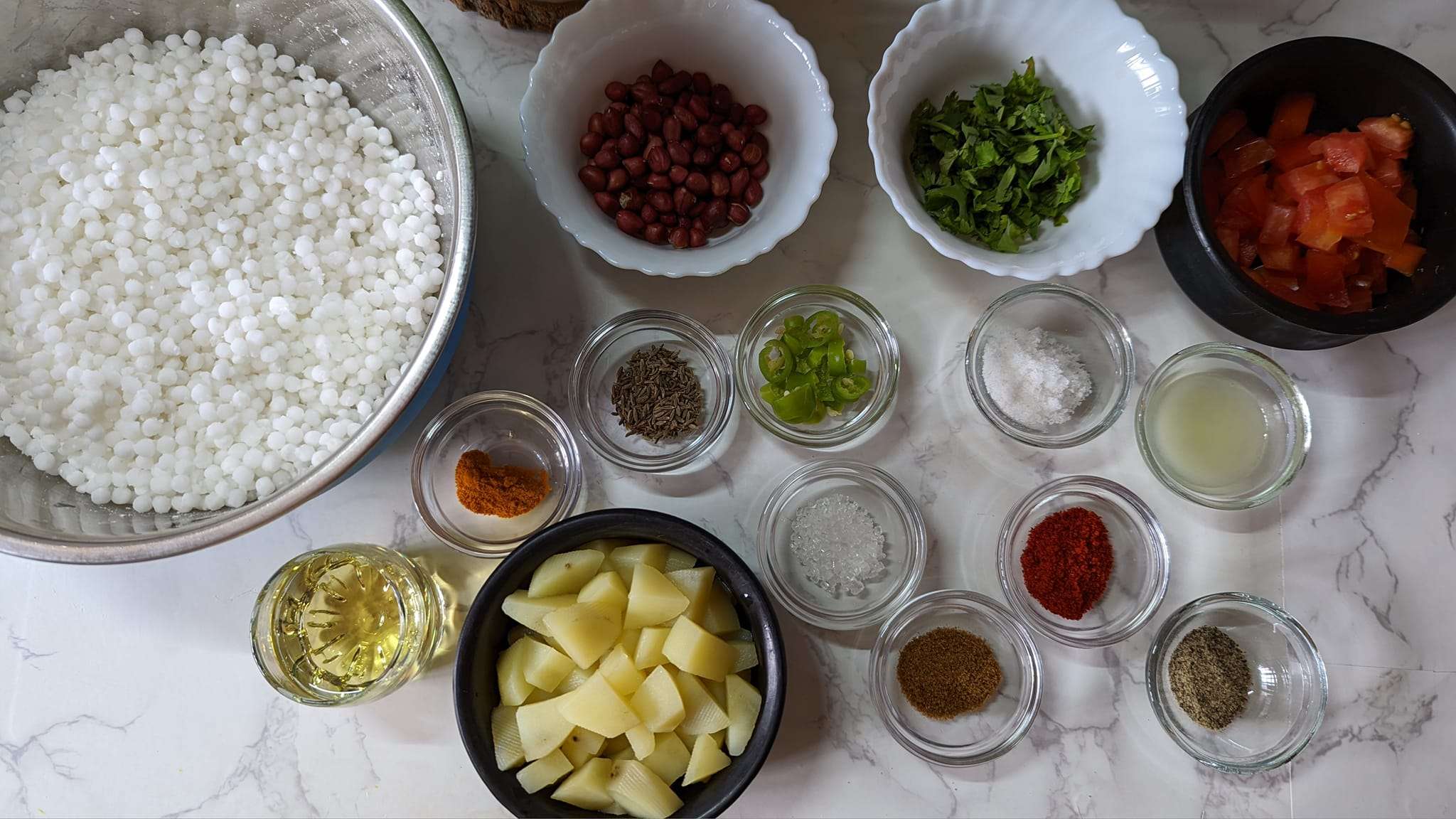
Sabudana – For this recipe, we utilise the common sabudana (sago pearls) that can be found at any Indian grocery store. I will provide the link to amazon where you can find it.
Potatoes – The recipe solely calls for one particular vegetable. Since potatoes are frequently eaten during fasting, they are also included in this khichdi, which is frequently prepared during Navratri.
Spices – There is no additional spice in this dish than cumin seeds. Although you may certainly add additional spices like chili powder, turmeric, etc., I prefer to keep things simple.
Peanuts – Without peanuts, sabudana khichdi wouldn’t exist! Crushed peanuts are frequently first added to the khichdi. Just now, I added them in their entirety.
Curry leaves and chilies – These two greatly enhance the khichdi’s flavor. These fresh ingredients are essential to this dish because we don’t use a lot of spices.
Seasonings – Salt and sugar are added to the khichdi if you want. Actually, I do advise adding sugar because it harmonizes the ingredients and enhances the flavor of the khichdi.
Use sendha namak (rock salt) in place of salt when preparing it for a fast., Lemon juice and cilantro are added as the dish’s excellent finishing touches to the khichdi.
Check out the Sabudana Khichdi Recipe (Fluffy & Non-sticky) Recipe Video:
How To Make Sabudana Khichdi Recipe (Fluffy & Non-sticky) Step By Step With Photo:
- Wash sabudana or tapioca pearl or sago nicely.
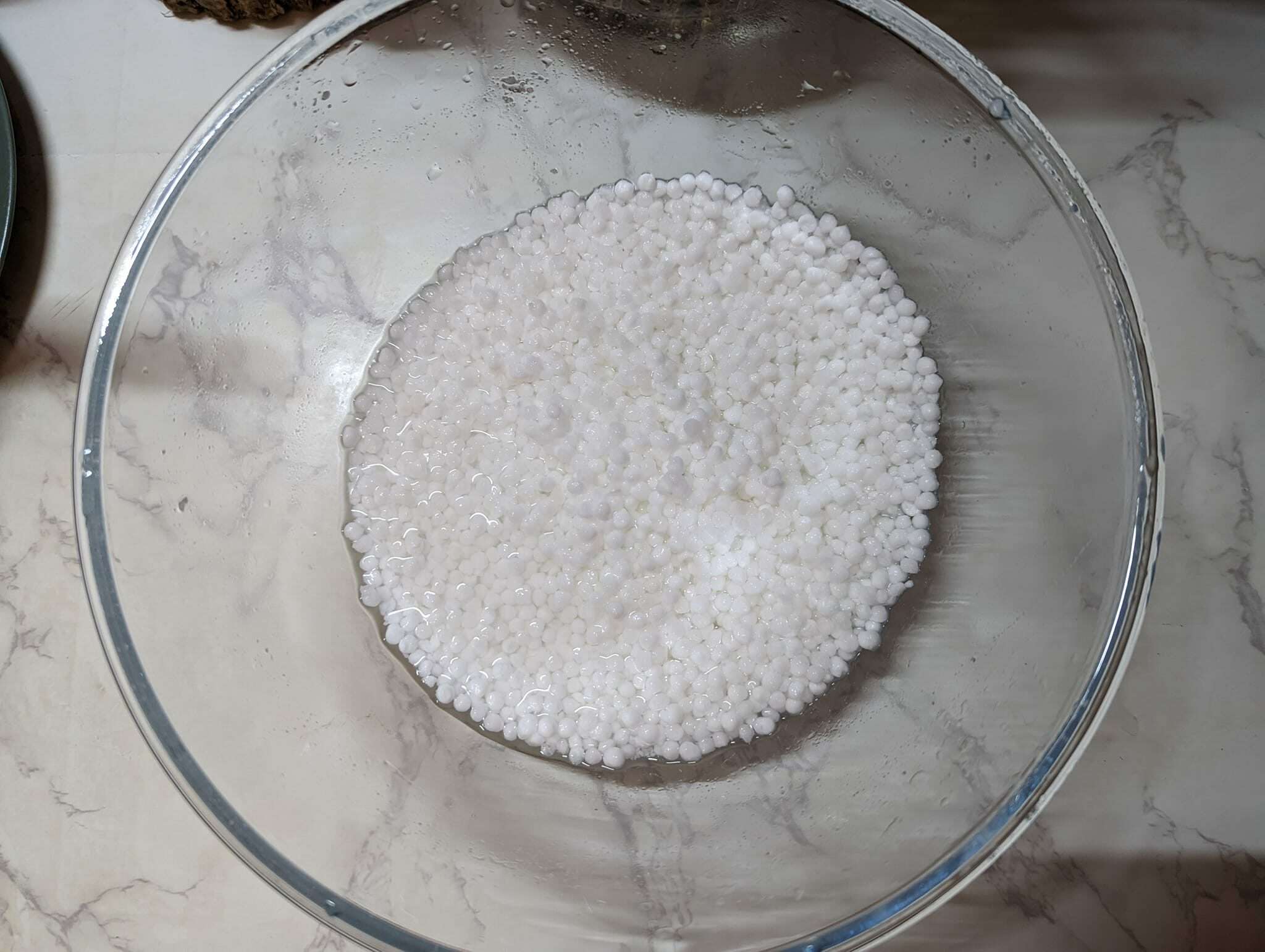
- Drain out the water with the help of a colander after washing thoroughly.
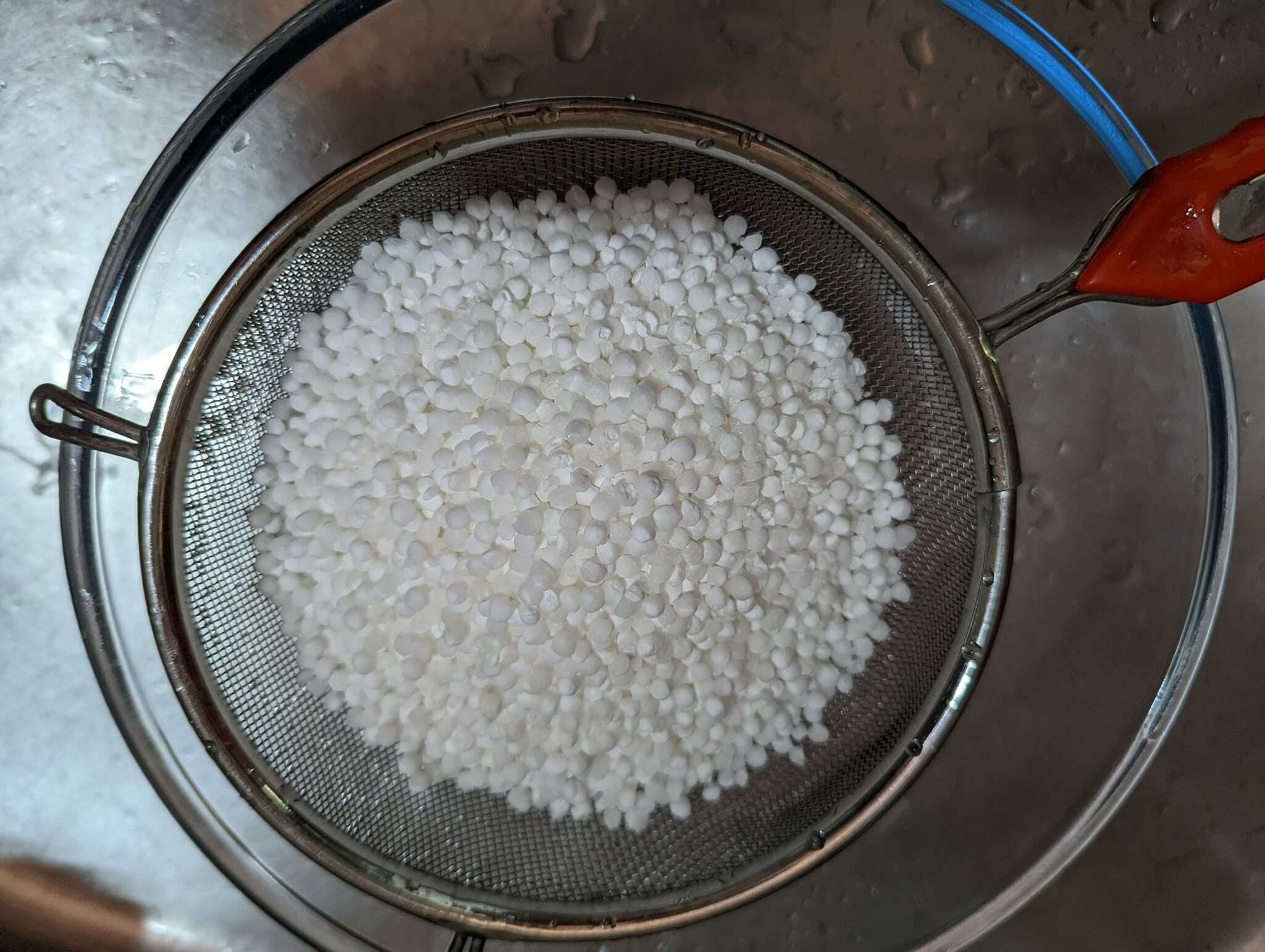
- Add 6 to 7 tbsp water or a half cup of water for 1 cup of sago pearls and soak for 4 to 5 hours.

- Enough for nonsticky sabudana pearls to fluff and soft.
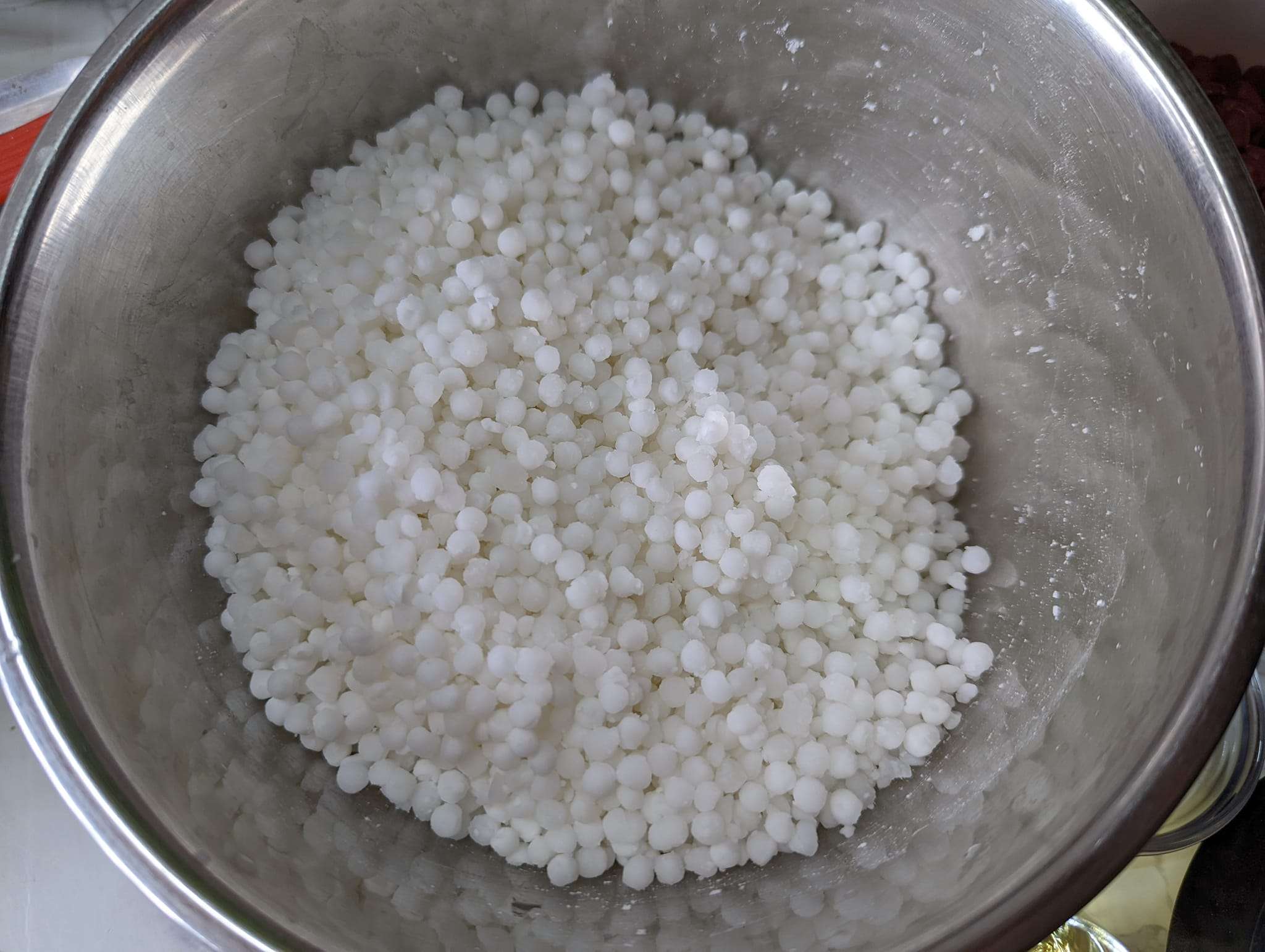
- Press one sabudana and see if they break nicely then it means they are ready.
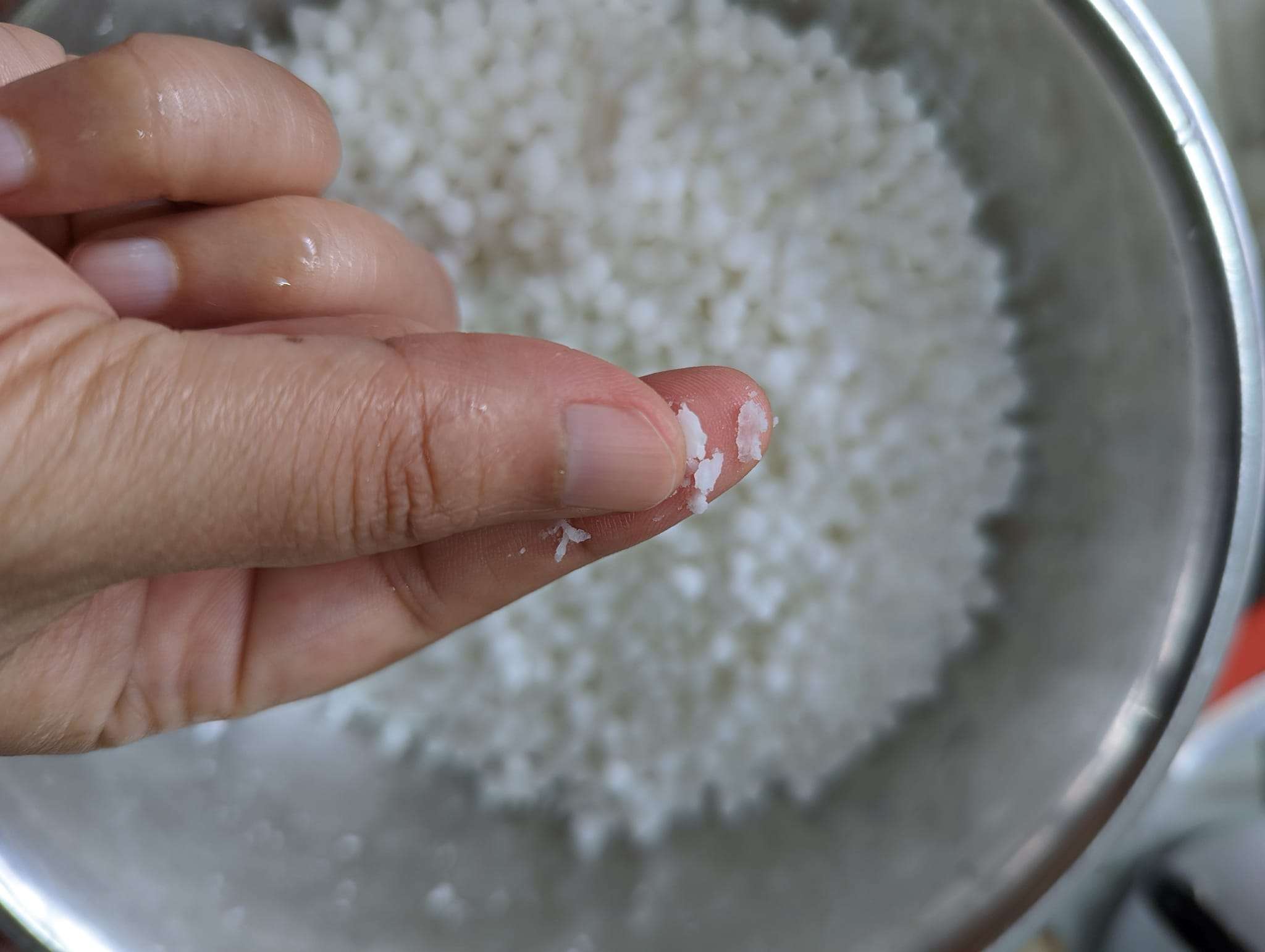
- Heat sesame oil or vegetable oil in a pan and add cumin seeds. Let them splatter.

- Now add green chili chopped.
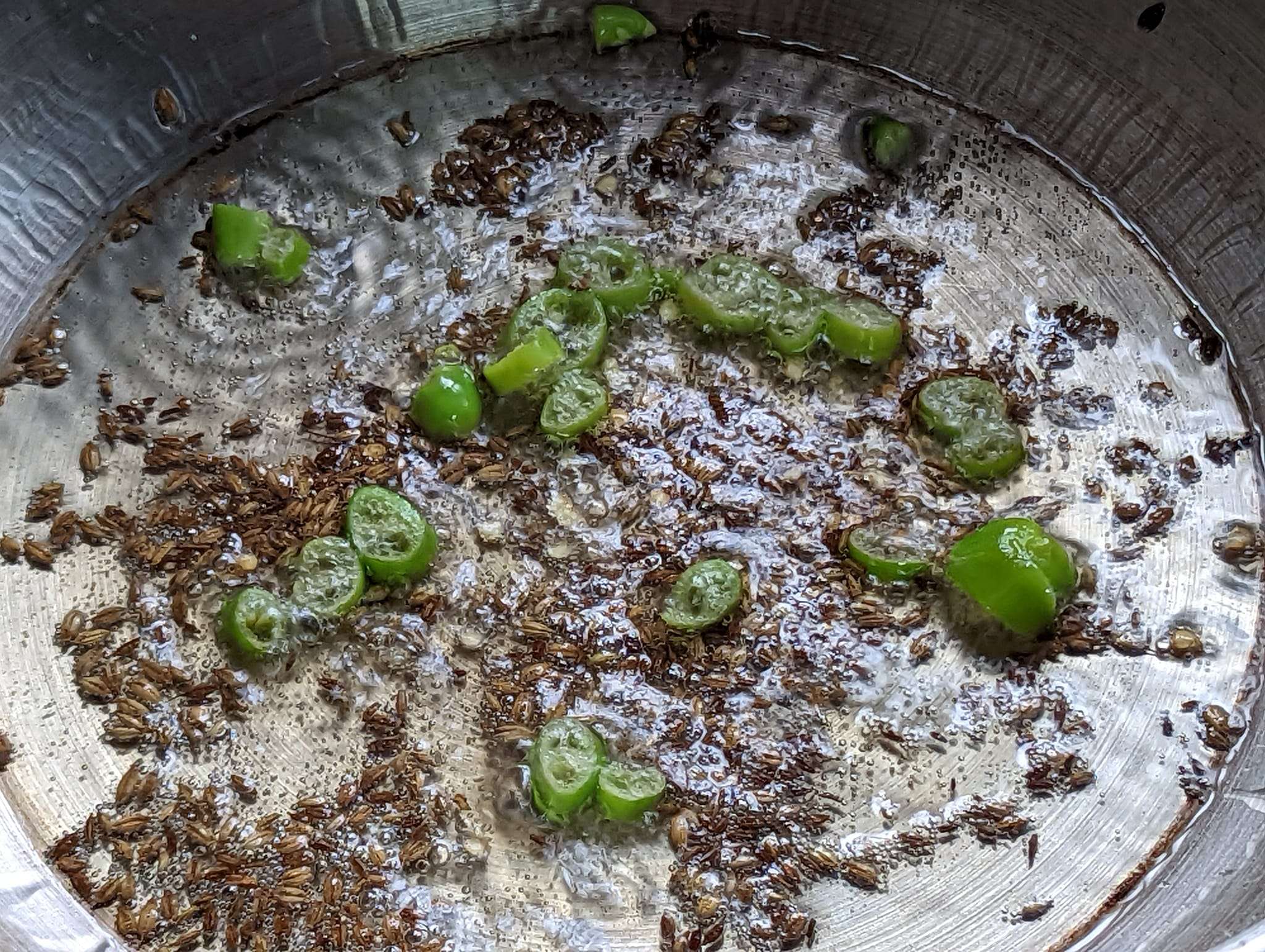
- Then add boiled potato cubes and fry for 5 minutes.

- Add fasting rock salt or sendha namak to taste and mix well.
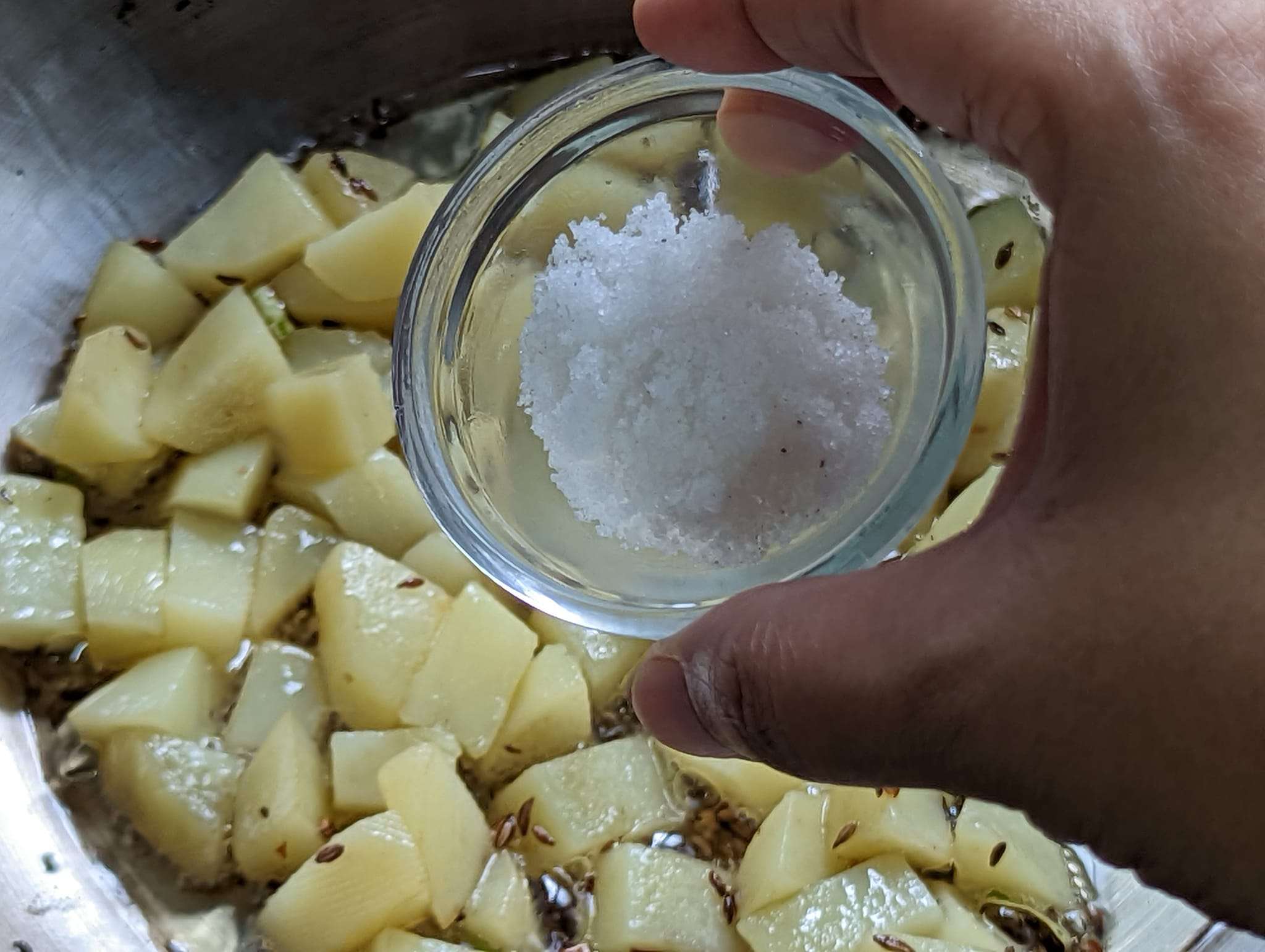
- Now to the fluffed tapioca flour add sendha namak, red chili powder, and roasted cumin powder.
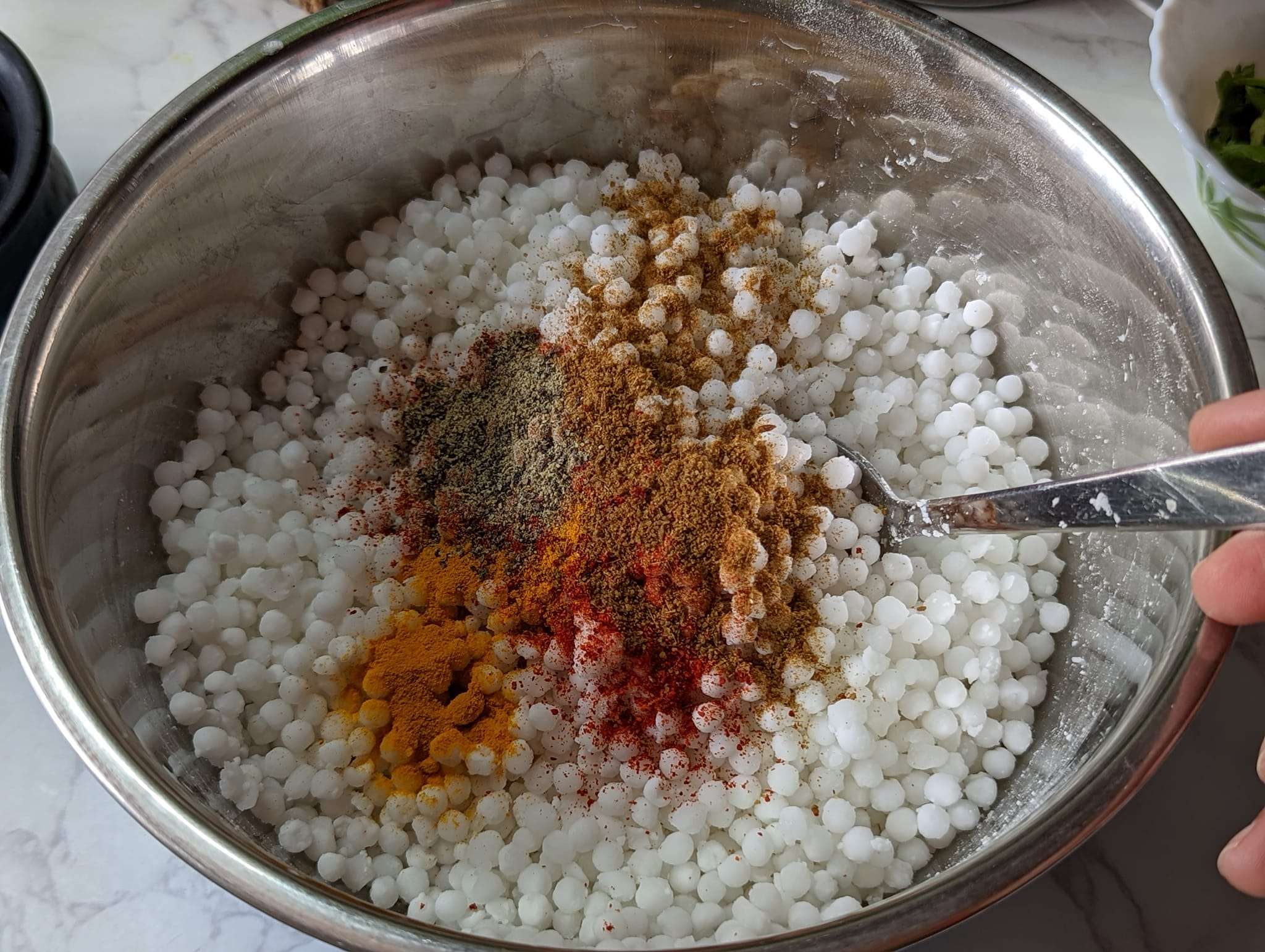
- Mix well and keep aside.
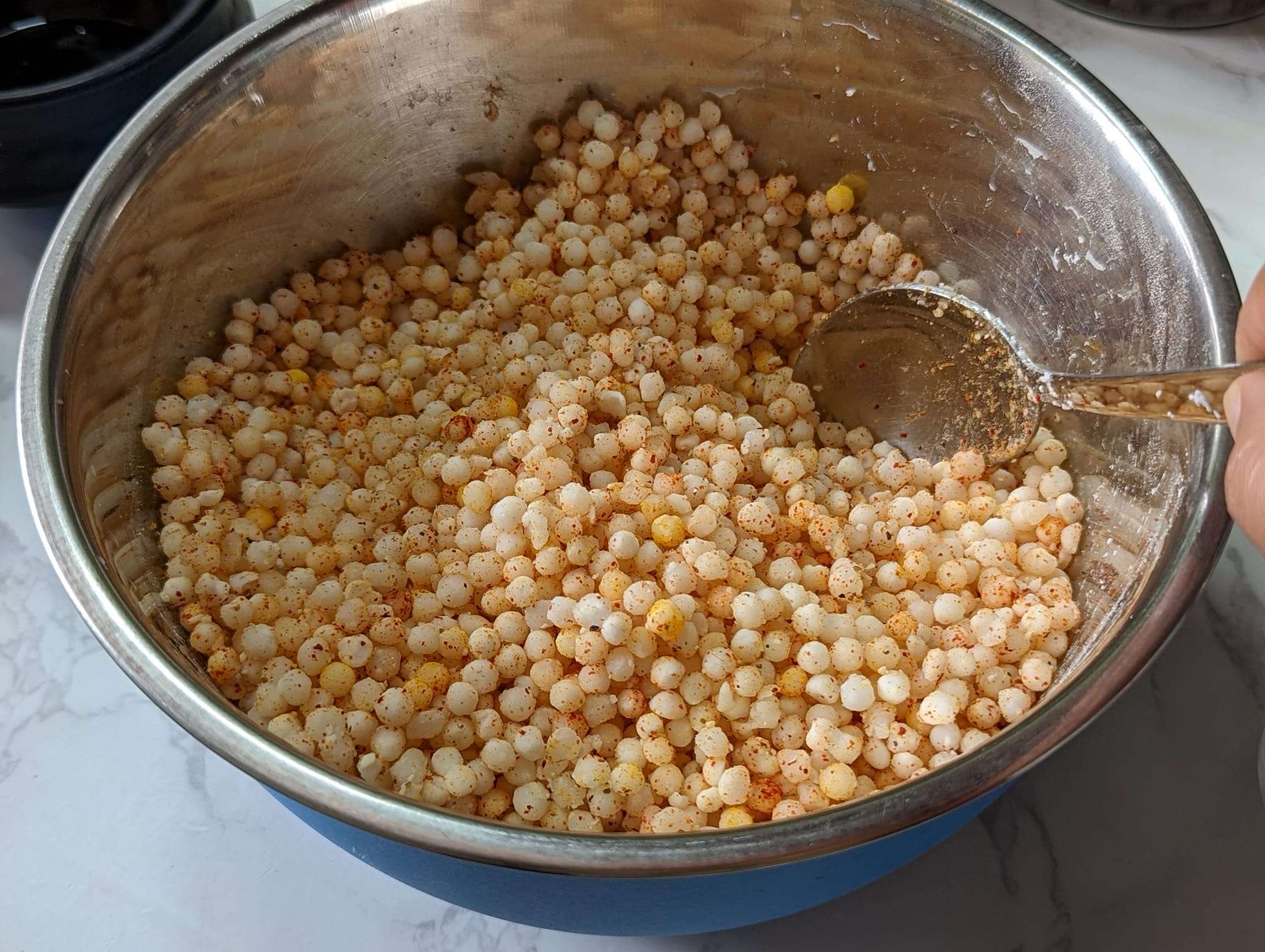
- Add black pepper powder to the potato mixture.
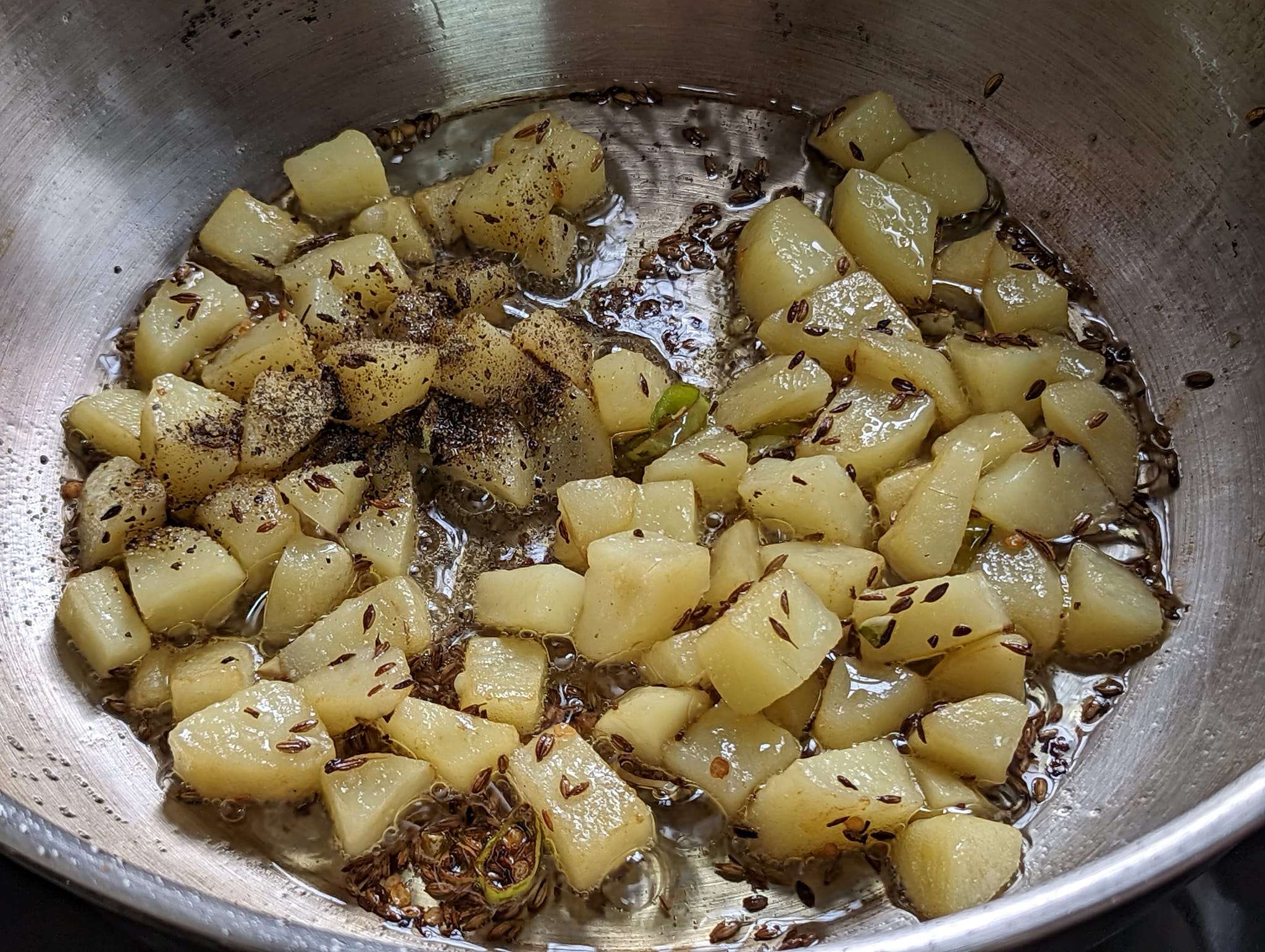
- Add the slitted green chilies.
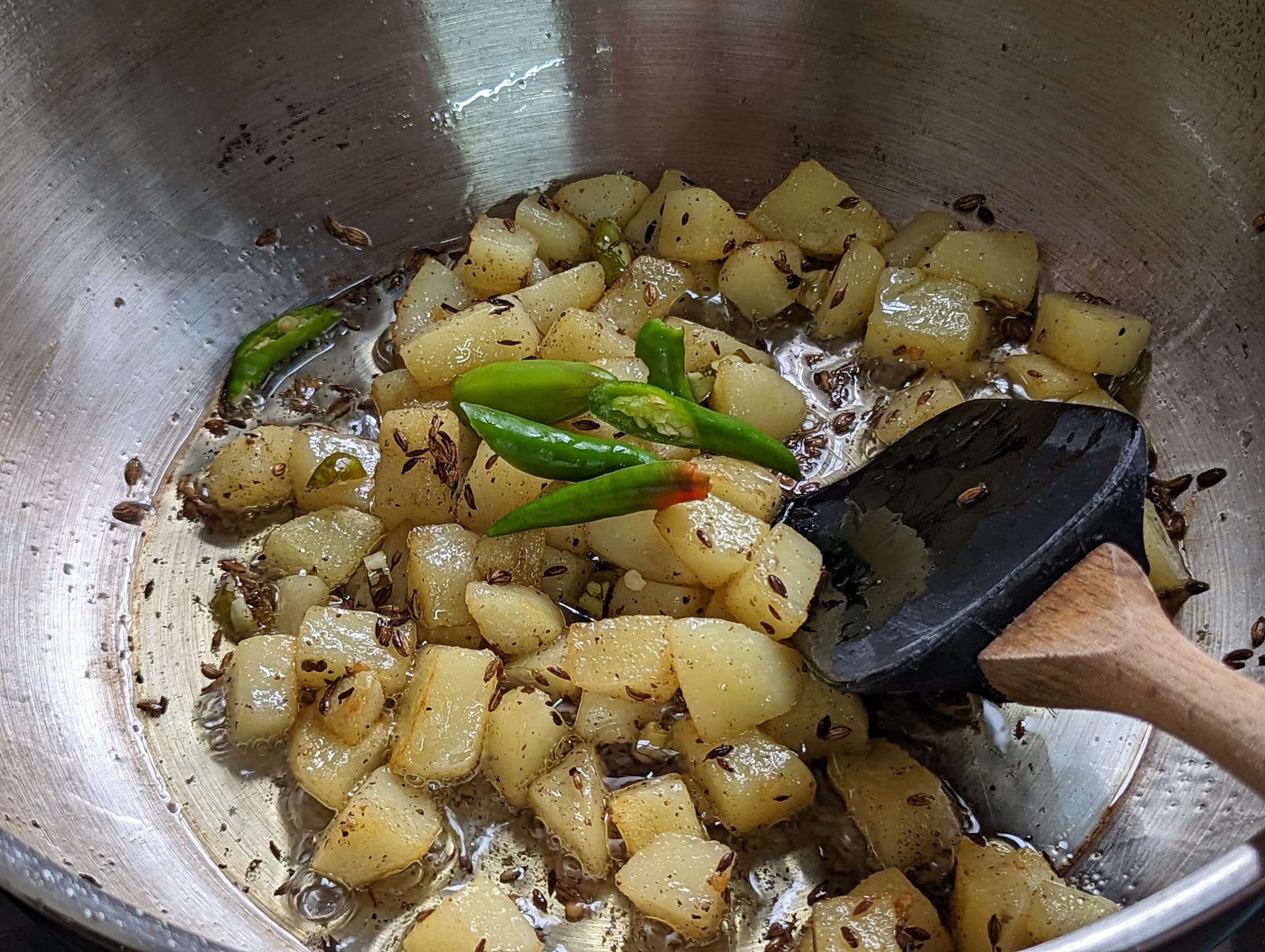
- Mix well.

- Add fluffed seasoned tapioca flour.
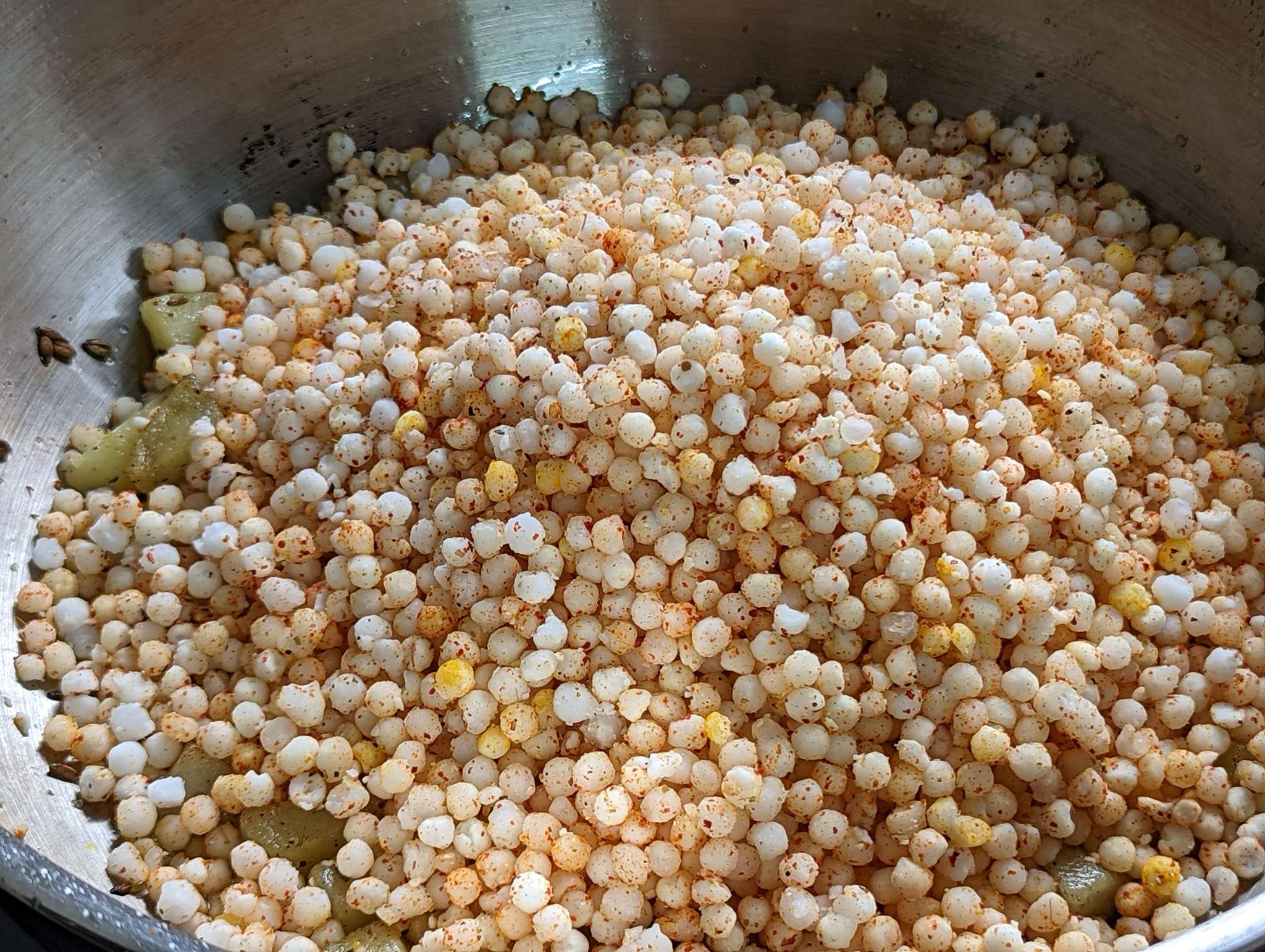
- Mix well.
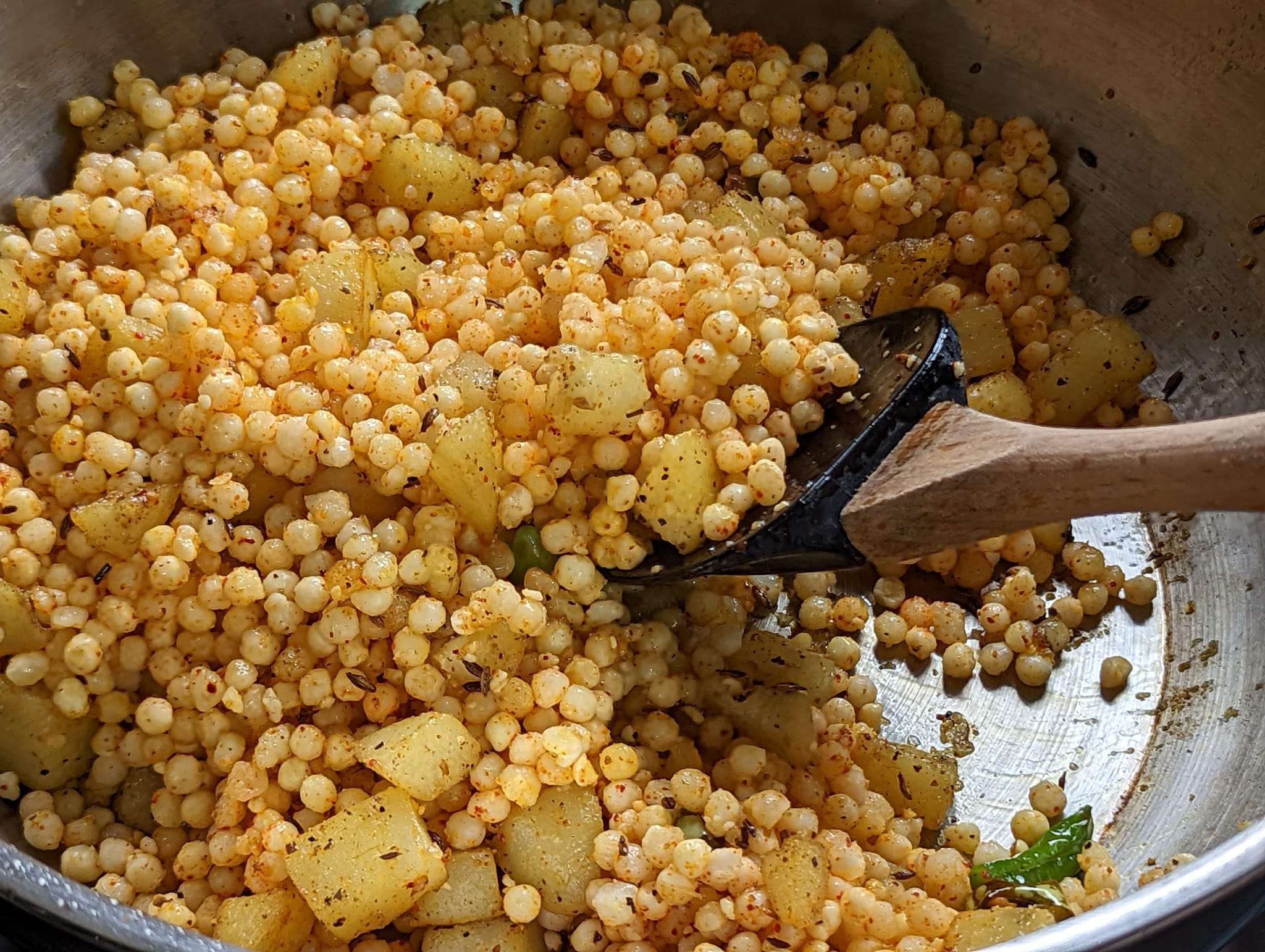
- Now add chopped tomatoes and mix well.
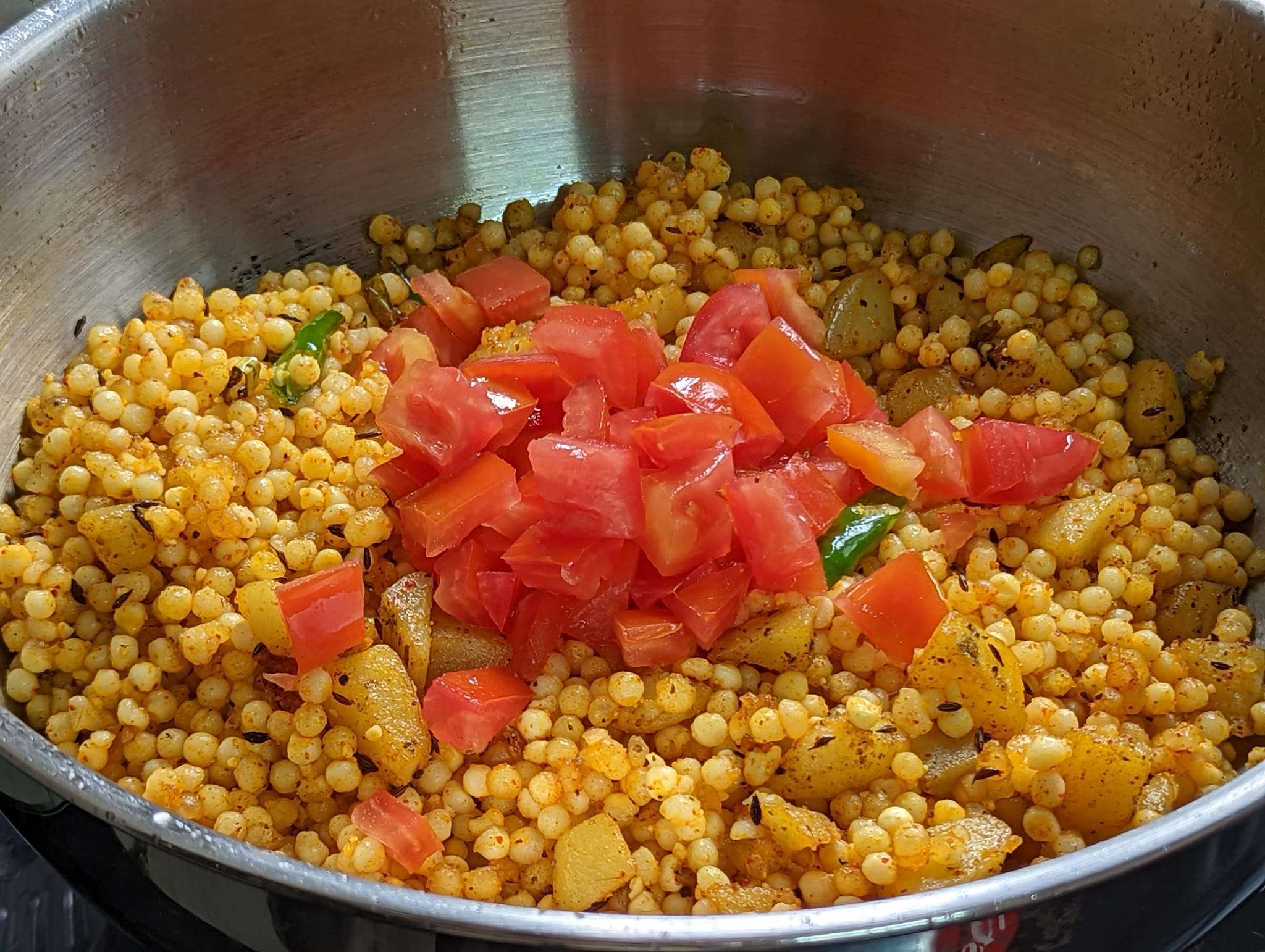
- Add coriander chopped and mix well.
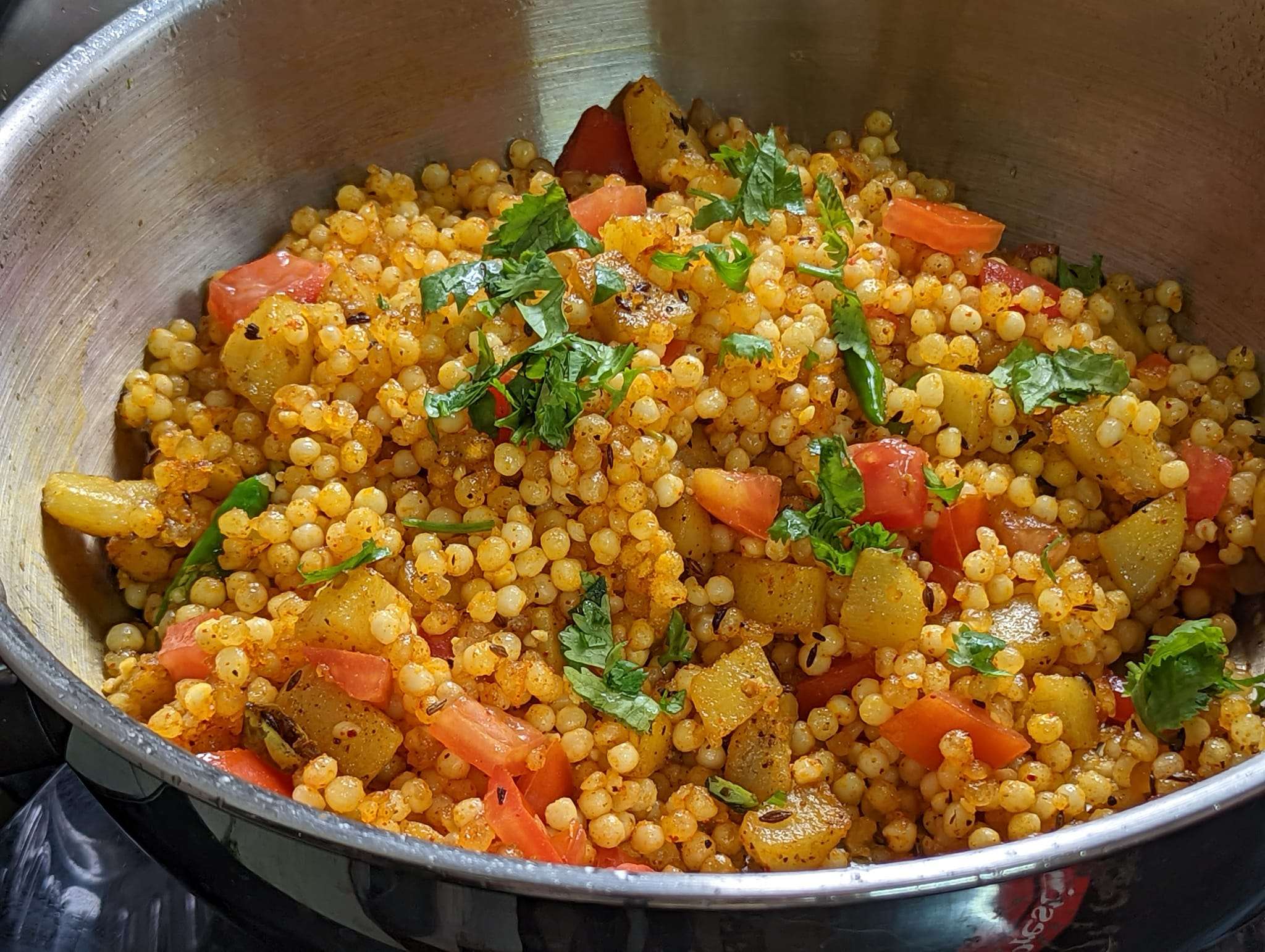
- Now cover with a lid and cook on a medium flame for 6 to 8 minutes. Do not over cook more than 10 minutes in total after adding sago pearls otherwise they will start to form lumps.

- Open the lid after 6 minutes.
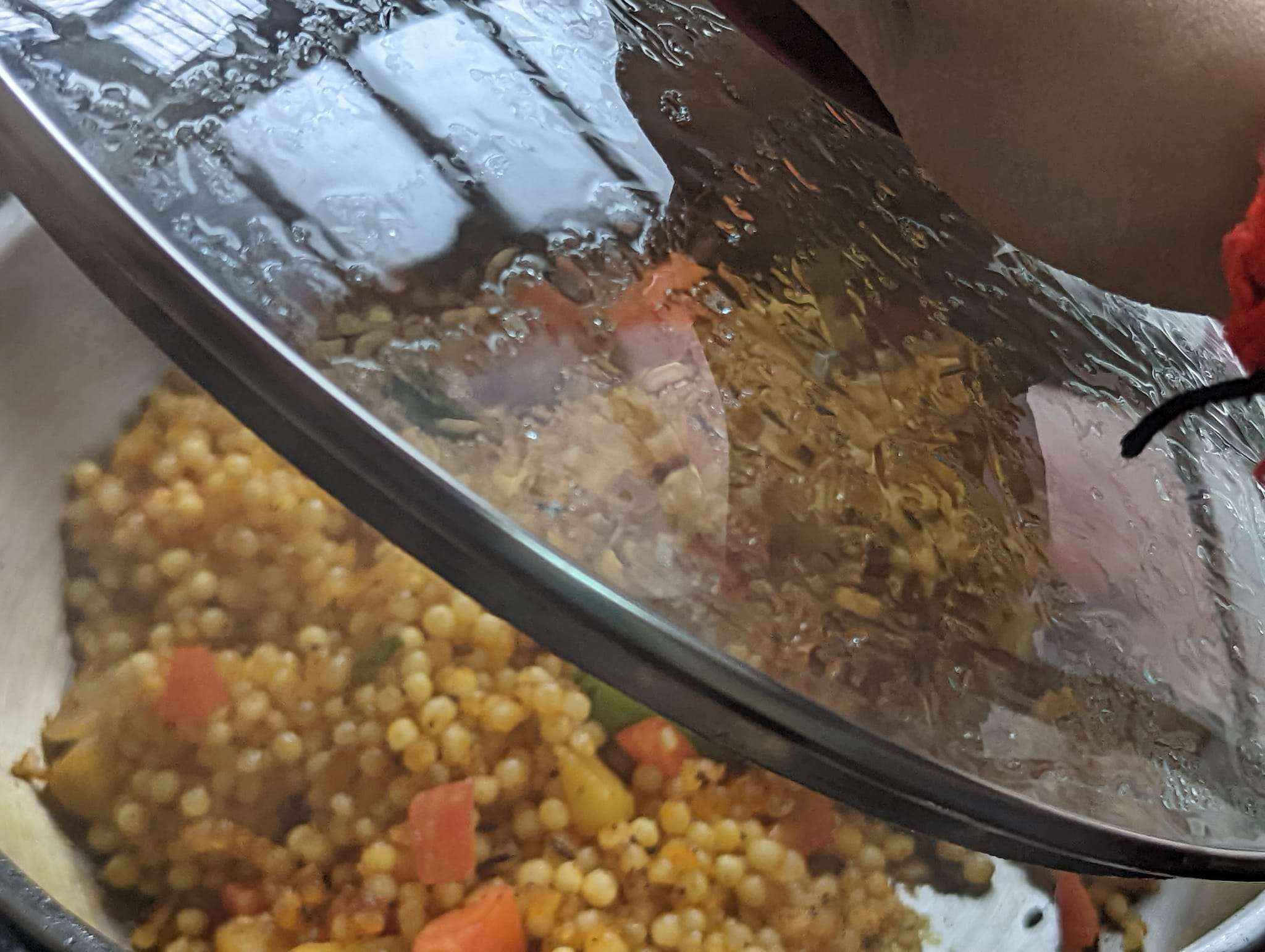
- Add sugar and mix well.
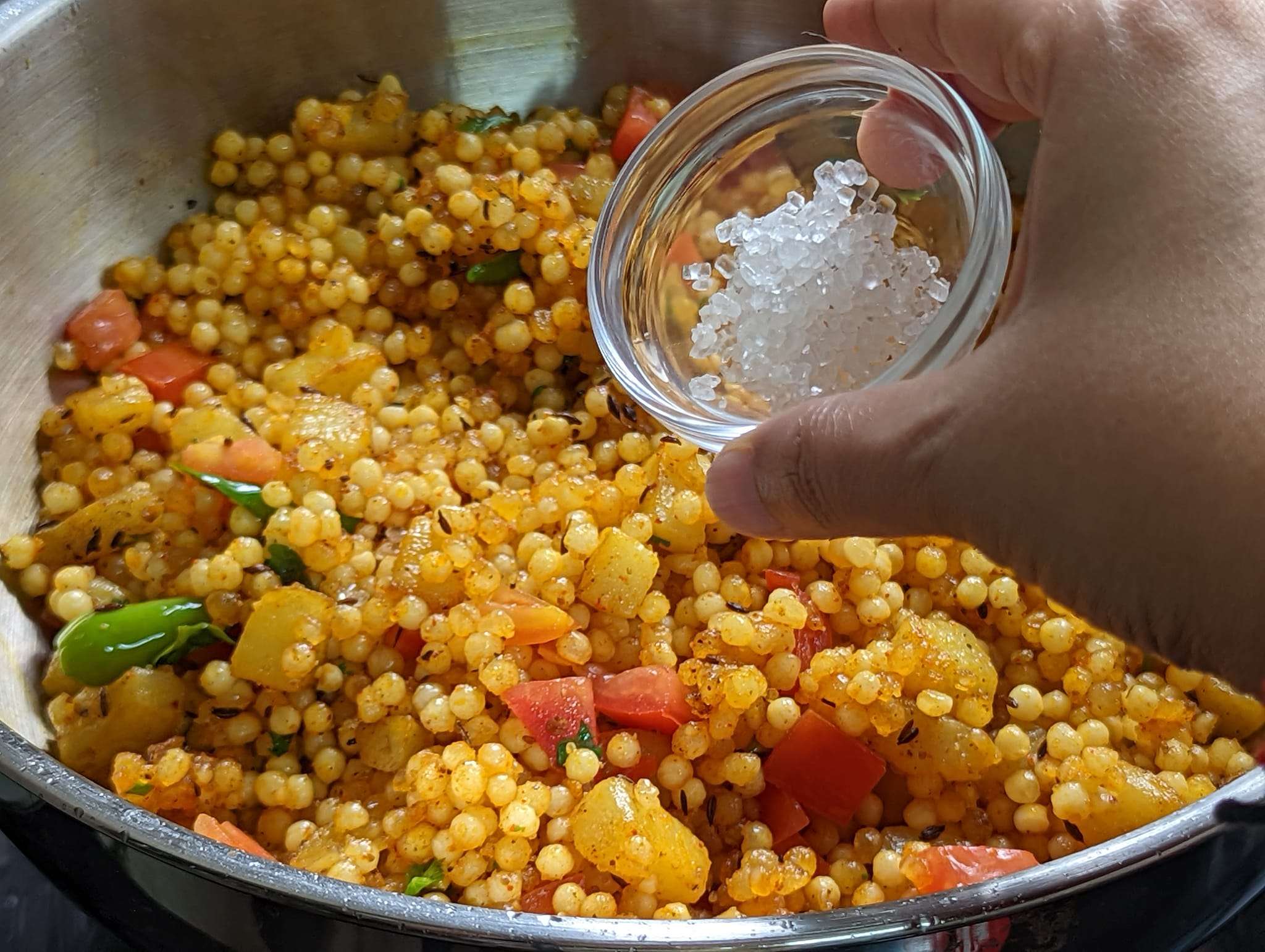
- Add lemon juice and mix well.
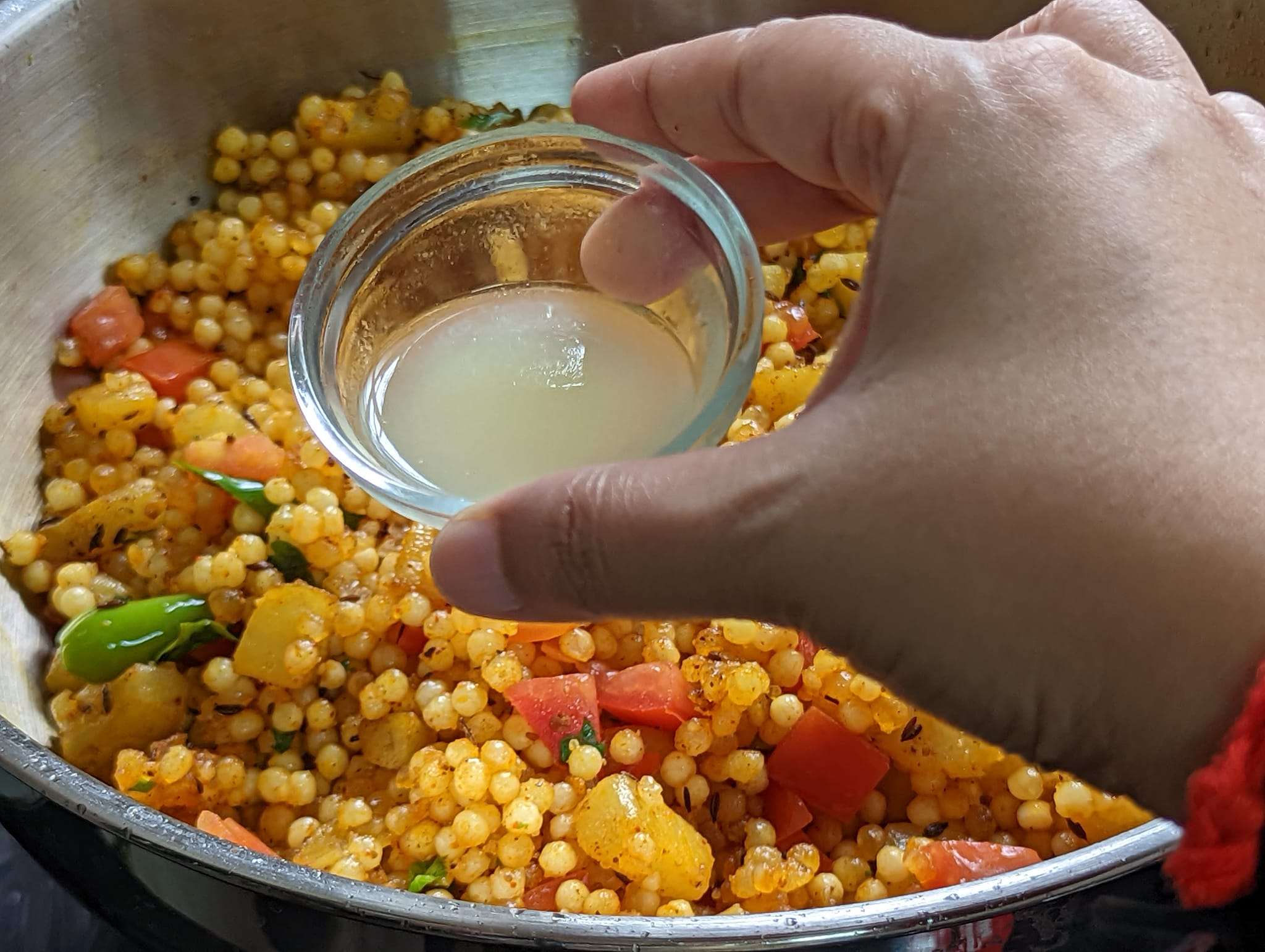
- Now cover and cook for 2 minutes. Turn off the flame.
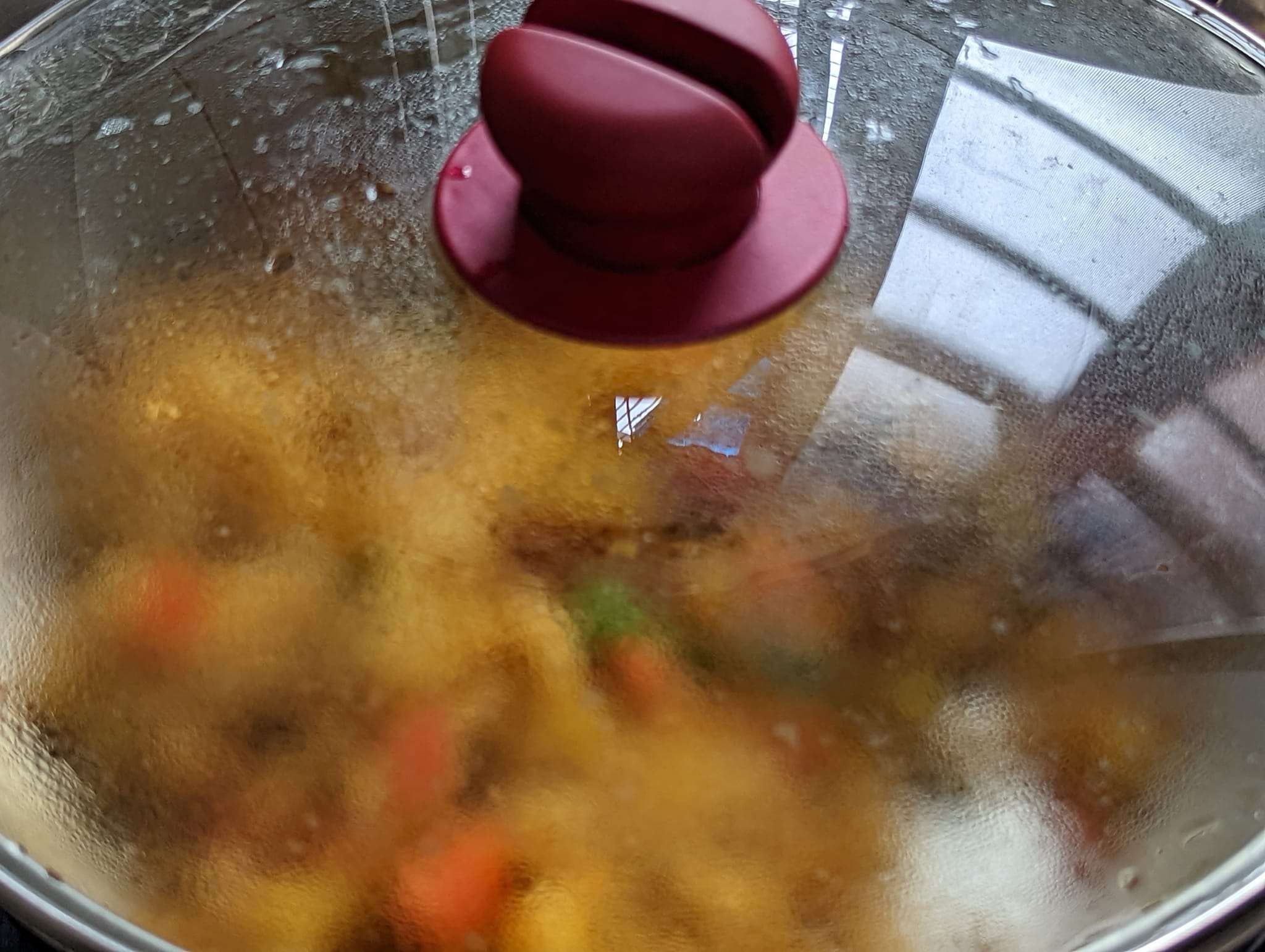
- Add coriander chopped and roasted peanuts.
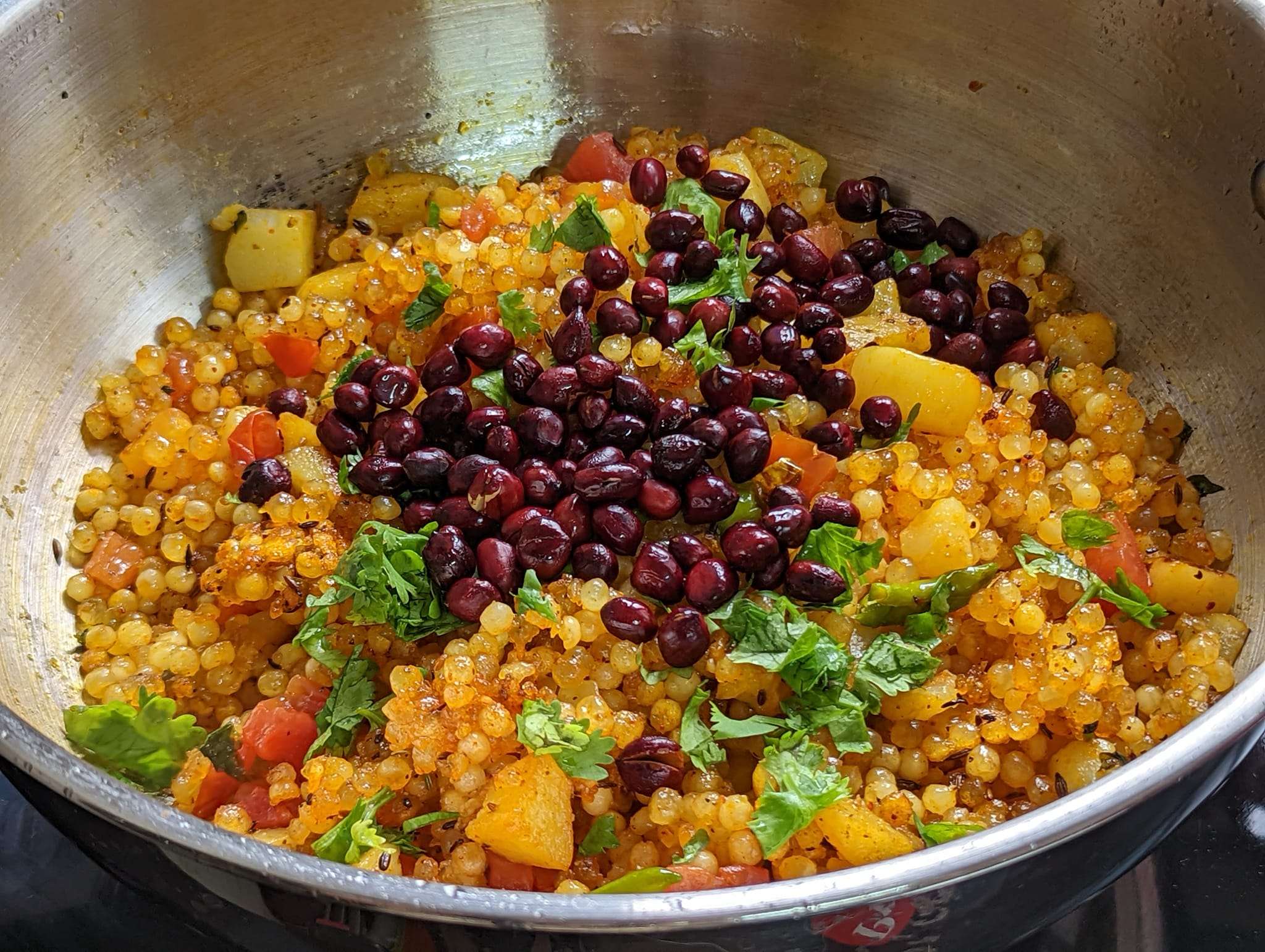
- Mix well. Serve hot and enjoy.
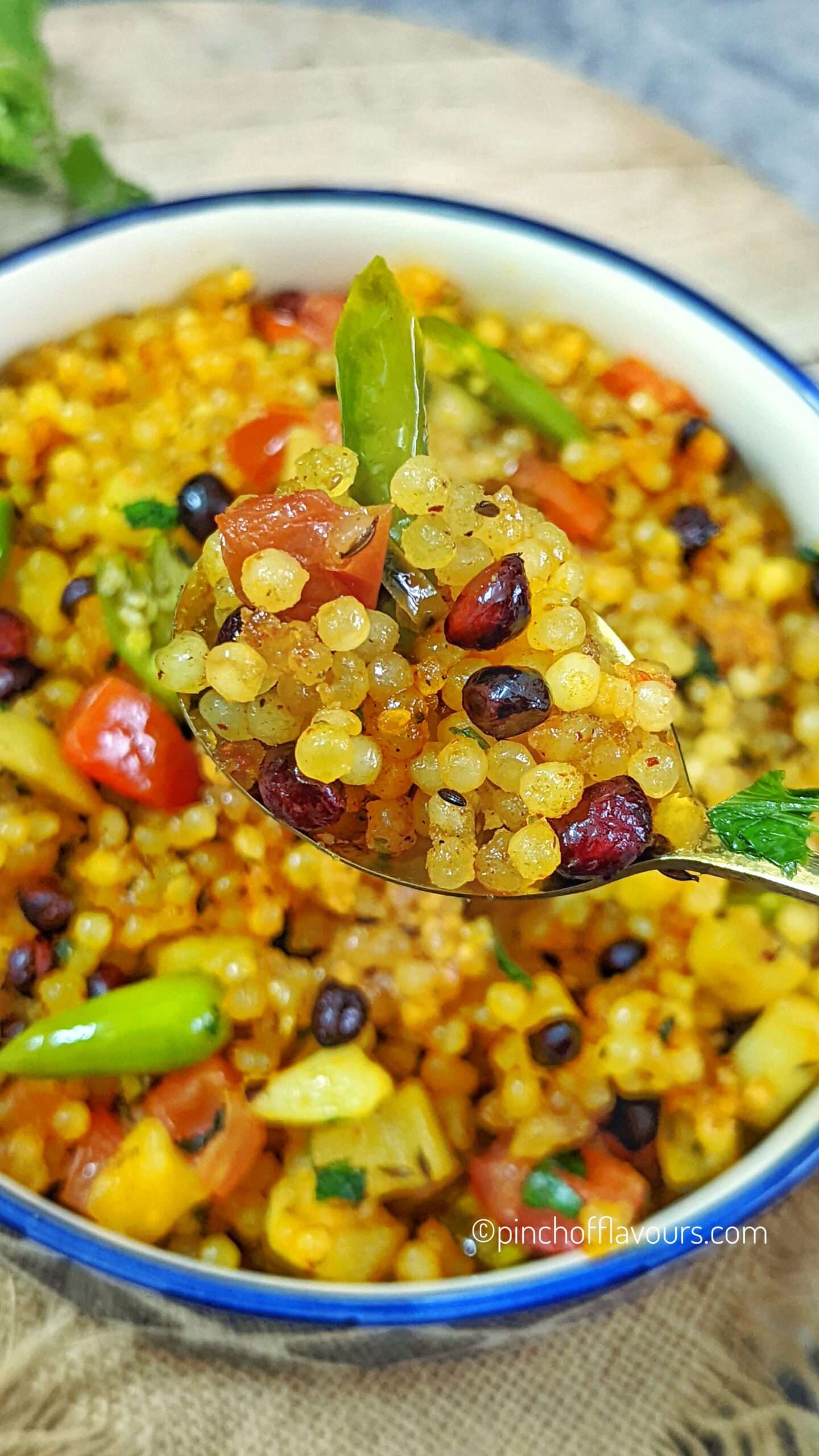
Sabudana Khichdi Recipe (Fluffy & Non-sticky)
Important Suggestions To Keep In Mind
- The initial crucial step is to thoroughly rinse the sabudana several times. This aids in clearing the pearls’ surface of extra powdered starch. The pearls will adhere to one another and clump up if they are not thoroughly cleaned. I give them three thorough rinses in a lot of water.
- The next crucial step is to soak sabudana in cold, fresh water as needed. You can soak them in two different ways to get the ideal texture. The first is to substitute 34 cups of water for each cup of sabudana. The second way is to barely submerge them in the water while soaking them. Below are further details.
- If you soak them in a lot of water, they will become oversoaked and eventually become gluey when exposed to heat. I prefer to wash them thoroughly and just soaking them in half a cup of water was enough for my pearls to fluff and were nonsticky.
- You should be able to press the sabudana and simply mash it up to determine whether it has softened or not.
- Add a few teaspoons of water to the bowl if the sabudana pearls’ centers appear to be somewhat firm. For another 30 minutes, cover and leave.
- Keep in mind that the pearls must be properly softened. The khichdi won’t have a decent texture if the center is firm because the sabudana won’t cook through properly.
- Longer cooking makes the pearls sticky and causes lumps to form. Sabudana simply needs to be cooked for two to three minutes. When they become translucent throughout this period, they have been cooked.
- You may quickly prepare a beautiful, non-sticky sabudana khichdi if you properly follow these instructions.
- Use a pan other than cast iron. Sabudana becomes sticky and sticks to the pan as a result of the intense heat. Use a non-stick pan instead.
- Don’t forget the lemon juice. If there are any lumps in the cooked sabudana khichdi, break them up with a fork before adding it toward the end. Since they are made entirely of starch, little lumps here and there may be prevalent.
- I usually avoid adding sugar since it makes my sabudana sticky. So you can choose to use it or not.
- You can skip turmeric powder if you want to.
Frequently Asked Questions
Does sabudana khichdi contain gluten?
Yes, this dish is both vegan and gluten-free.
Can you make it in navratri fasting?
Yes you can of course. If you want just avoid turmeric powder or any kind of spices. Just use snedha namak that is rock salt during fasting.
Some other Navratri recipes you will like on my blog are – Kaju Katli No-Cook Recipe | Indian Cashew Fudge, Jalebi, Stuffed Sabudana Vada Air Fryer, Motichoor Truffles.
Note: A rough estimate of nutrition is provided.
💓
We Love to hear back from you and appreciate your success stories!
Have you tried this “Recipe”? Please feed us with your ★ ★ ★ ★ ★ star ratings and comments below.
Recipe Card
Print
Sabudana Khichdi Recipe (Fluffy & Non-sticky)
- Total Time: 20 minutes
- Diet: Vegan
Description
Sabudana Khichdi Recipe (Fluffy & Non-sticky), A well-known Indian meal called sabudana khichdi is prepared with tapioca pearls, entire spices, roasted peanuts, potatoes, and fresh curry leaves.
Ingredients
- 1 cup – Tapioca Pearl or sago
- 1/2 – Roasted Peanuts
- 5 tbsp – Sesame oil
- 1/2 tsp – Turmeric powder
- 2 to 3 medium – Boiled potatoes
- 1 tbsp – Cumin seeds
- 3 – Green chili chopped
- 1/2 cup – Coriander chopped
- 2 medium – Tomato chopped
- 1 tbsp – Lemon Juice
- 1 tbsp – Sendha Namak/ Rock Salt
- 1 tsp – Sugar
- 1 tbsp – Roasted cumin powder
- 1 tbsp – Kashmiri red chili powder
- 1/2 tsp – Black pepper powder
Instructions
- Wash sabudana or tapioca pearl or sago nicely.
- Drain out the water with the help of a colander after washing thoroughly.
- Add 6 to 7 tbsp water or a half cup of water for 1 cup of sago pearls and soak for 4 to 5 hours.
- Enough for nonsticky sabudana pearls to fluff and soft.
- Press one sabudana and see if they break nicely then it means they are ready.
- Heat sesame oil or vegetable oil in a pan and add cumin seeds. Let them splatter.
- Now add green chili chopped.
- Then add boiled potato cubes and fry for 5 minutes.
- Add fasting rock salt or sendha namak to taste and mix well.
- Now to the fluffed tapioca flour add sendha namak, red chili powder, and roasted cumin powder.
- Mix well and keep aside.
- Add black pepper powder to the potato mixture.
- Add the slitted green chilies.
- Mix well.
- Add fluffed seasoned tapioca flour.
- Mix well.
- Now add chopped tomatoes and mix well.
- Add coriander chopped and mix well.
- Now cover with a lid and cook on a medium flame for 6 to 8 minutes. Do not over-cook more than 10 minutes in total after adding sago pearls otherwise, they will start to form lumps.
- Open the lid after 6 minutes.
- Add sugar and mix well.
- Add lemon juice and mix well.
- Now cover and cook for 2 minutes. Turn off the flame.
- Add coriander chopped and roasted peanuts.
- Mix well. Serve hot and enjoy.
Recommended Products
As an Amazon Associate and member of other affiliate programs, I earn from qualifying purchases. Just click on the below images to purchase.
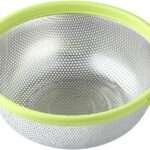
Notes
- The initial crucial step is to thoroughly rinse the sabudana several times. This aids in clearing the pearls’ surface of extra powdered starch. The pearls will adhere to one another and clump up if they are not thoroughly cleaned. I give them three thorough rinses in a lot of water.
- The next crucial step is to soak sabudana in cold, fresh water as needed. You can soak them in two different ways to get the ideal texture. The first is to substitute 34 cups of water for each cup of sabudana. The second way is to barely submerge them in the water while soaking them. Below are further details.
- If you soak them in a lot of water, they will become oversoaked and eventually become gluey when exposed to heat. I prefer to wash them thoroughly and just soaking them in half a cup of water was enough for my pearls to fluff and were nonsticky.
- You should be able to press the sabudana and simply mash it up to determine whether it has softened or not.
- Add a few teaspoons of water to the bowl if the sabudana pearls’ centers appear to be somewhat firm. For another 30 minutes, cover and leave.
- Keep in mind that the pearls must be properly softened. The khichdi won’t have a decent texture if the center is firm because the sabudana won’t cook through properly.
- Longer cooking makes the pearls sticky and causes lumps to form. Sabudana simply needs to be cooked for two to three minutes. When they become translucent throughout this period, they have been cooked.
- You may quickly prepare a beautiful, non-sticky sabudana khichdi if you properly follow these instructions.
- Use a pan other than cast iron. Sabudana becomes sticky and sticks to the pan as a result of the intense heat. Use a non-stick pan instead.
- Don’t forget the lemon juice. If there are any lumps in the cooked sabudana khichdi, break them up with a fork before adding it toward the end. Since they are made entirely of starch, little lumps here and there may be prevalent.
- I usually avoid adding sugar since it makes my sabudana sticky. So you can choose to use it or not.
- You can skip turmeric powder if you want to.
- Prep Time: 10 minutes
- Resting Time: 4 hours
- Cook Time: 10 minutes
Nutrition
- Serving Size: 2 people
- Calories: 302 Kcal
- Sugar: 1g
- Sodium: 712mg
- Fat: 13g
- Saturated Fat: 1g
- Trans Fat: 0g
- Carbohydrates: 62g
- Fiber: 7g
- Protein: 3g
- Cholesterol: 32mg
Note: A rough estimate of nutrition is provided.
💓
We Love to hear back from you and appreciate your success stories!
Have you tried this “Recipe”? Please feed us with your ★ ★ ★ ★ ★ star ratings and comments below.
You can also FOLLOW me on FACEBOOK, INSTAGRAM, and PINTEREST for more fabulous recipes and updates.
*SOME OF THE LINKS IN THIS POST ARE AFFILIATE LINKS AND WE WILL RECEIVE A COMMISSION IF YOU MAKE A PURCHASE AFTER CLICKING ON OUR LINK. THANK YOU FOR SUPPORTING OUR WORK HERE AT Pinchofflavours!







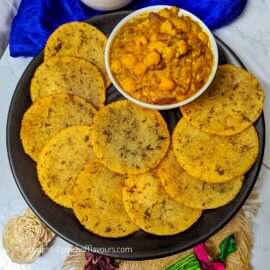
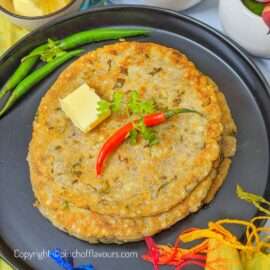


Leave a Reply